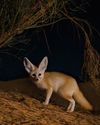FLIGHT PATH
BBC Wildlife
|March 2022
Speed, grace, endurance - birds are nature's ultimate aviators. Now scientists have discovered even more about their aerial adaptations...

Yet it wasn’t until the early 1900s that we found a way to fly. And, unsurprisingly, we did it through lessons learned from our feathered friends. We adopted the lightly curved shape of a bird’s wing – an aerofoil – and designed planes around it, because it was so efficient at managing airflow. The Wright brothers, too, owe much of their success to birdwatching. It was by observing buzzards soar above a river gorge – and how they twist their wingtips when they turn – that they solved the manoeuvrability issues that had plagued their craft.

The powerful wing muscles, porous bones and variety of wing and feather shapes that have evolved in birds have inspired many technologies. But scientists are discovering that bird flight isn’t solely about cutting through the air. It seems that a number of species use specialist features to actively manipulate the air as they fly, giving them the evolutionary upper hand… or wing.
This story is from the March 2022 edition of BBC Wildlife.
Subscribe to Magzter GOLD to access thousands of curated premium stories, and 10,000+ magazines and newspapers.
Already a subscriber? Sign In
MORE STORIES FROM BBC Wildlife

BBC Wildlife
"I was terrified the elephant would ram us"
African elephant in Kenya
2 mins
January 2026

BBC Wildlife
ALL YOU EVER NEEDED TO KNOW ABOUT THE Fennec fox
THE FENNEC FOX IS THE SMALLEST fox in the world, with a body length that can be as little as 24cm.
3 mins
January 2026

BBC Wildlife
INTO THE PLASTISPHERE
A unique synthetic ecosystem is evolving in our oceans – welcome to the plastisphere
7 mins
January 2026

BBC Wildlife
“More than half of all animal life exists in a parasitic relationship, and all life lives in symbiosis”
Our survival depends on species evolving to live together - but some relationships take dark turns
7 mins
January 2026

BBC Wildlife
Are animals able to dream?
SLEEP IS A MYSTERIOUS THING. FOR A long time, we weren't sure why we do it.
1 mins
January 2026

BBC Wildlife
Does a cuckoo know it's a cuckoo?
ABSURD LITTLE BIRDS ACROSS THE world lay their eggs in the nests of other species, leaving the hapless parents to raise a changeling at the expense of their own offspring.
2 mins
January 2026

BBC Wildlife
Orcas killing young sharks
Juvenile great whites are easy prey for orca pod
1 mins
January 2026

BBC Wildlife
Ocean goes on tour
Acclaimed film touring the UK, backed by live orchestra and choir
1 min
January 2026

BBC Wildlife
Feisty bats hunt like lions
Winged mammals use a 'hang and wait' strategy to take down large prey
1 mins
January 2026

BBC Wildlife
SNAP-CHAT
Richard Birchett on magical merlins, wily coyotes and charging deer
2 mins
January 2026
Translate
Change font size

